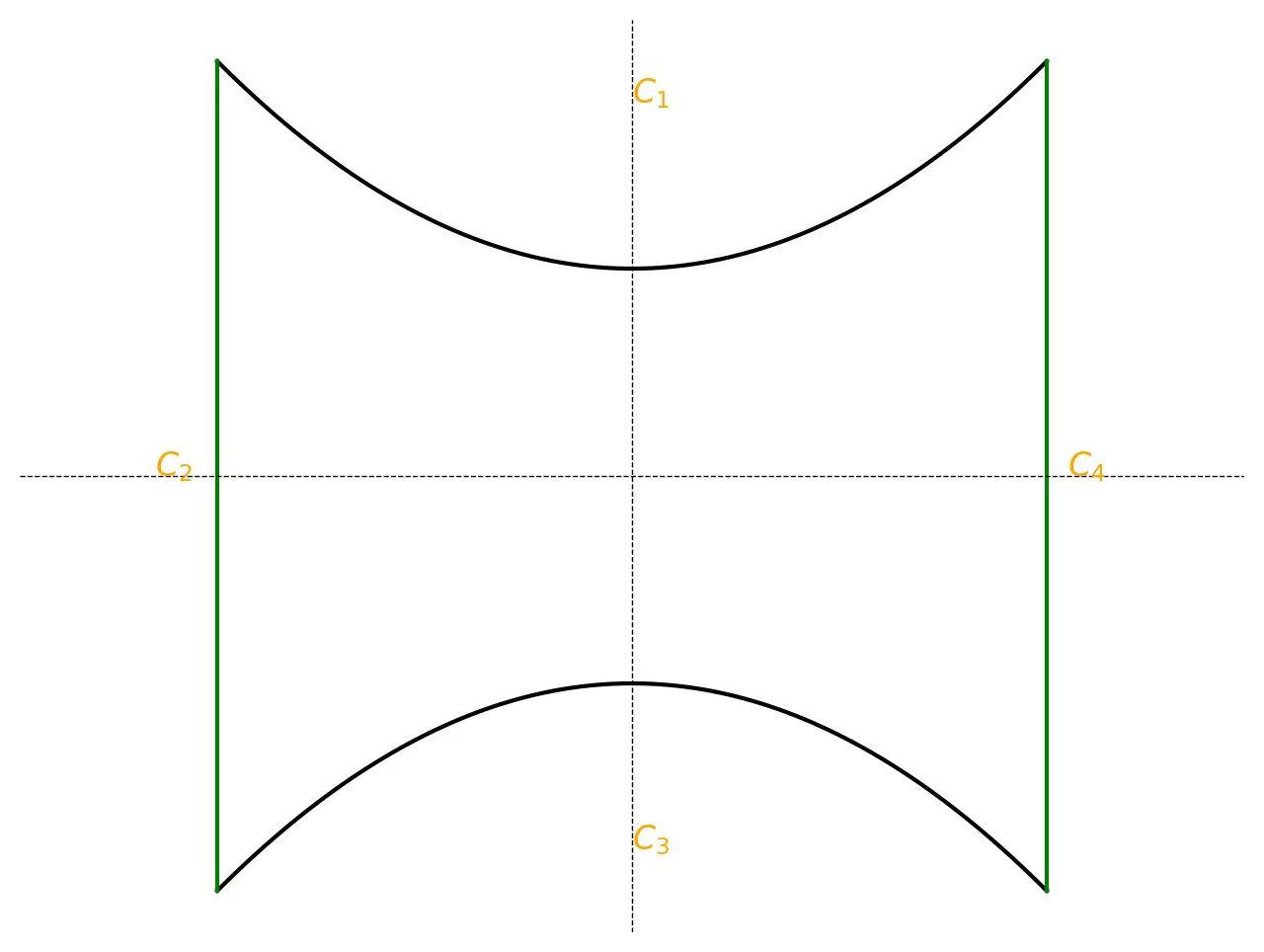Green's Theorem for Elementary Regions
see elementary regions
Lemma 1
Let be y-simple and be a function on and is a path
where + is counter-clockwise
pf:
Say is like

The same follows for x-simple regions
Green's theorem
Assume is a closed simple region
and and are
We can think of a vector field
This is equivalent to using curl
So we have
where
Flux and Green's theorem
If is a curve in the form of
then we can compute the unit normal at as:
where
(see unit tangent)
Let be a parameterization of
Using divergence we can write this as:
Area of a Simple Region
